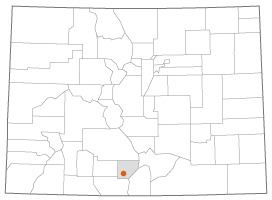Marshall Fire Power Outage Impacts San Luis Valley Health Regional Medical Center
What Happened

The Marshall fire, in Boulder County, Colorado, was reported to emergency services on December 30, 2021, at 11:00 a.m. Over 6,000 acres burned in less than 24 hours. The fire destroyed 1,084 structures, two people were killed, and the cost to repair and replace structures is estimated to be in the billions of dollars.
Xcel Energy's natural gas infrastructure was impacted by the fire. To decrease the amount of gas being used and to ensure the viability of the system, the company instituted periodic electrical outages for customers in several counties. The San Luis Valley Health Regional Medical Center is a rural prospective payment system (PPS) hospital in Alamosa and is located over 250 miles from the site of the fire. The hospital was in an area that experienced an outage.
At 2:00 p.m., the hospital was notified of a rolling outage that would impact the hospital that was estimated to last 2 hours. San Luis Valley Health had an emergency action plan in place to use generators to manage a power outage emergency and was prepared to manage a 2-hour power outage.
Unfortunately, the initial outage lasted 4.5 hours. The hospital had patients on ventilators at the time due to the COVID-19 pandemic, so there was added pressure to ensure that the back-up generators functioned properly for the duration of the power outage.
In addition to having concerns for patients in the hospital, healthcare workers worried about outpatient needs as well. Many community residents required electricity to power healthcare equipment used in their homes such as oxygen concentrators. Frequent communication with emergency medical services (EMS) was initiated during the power outage to ensure and coordinate the safety of those individuals. The hospital set up an oxygen room in a hospital conference room to assist outpatients who needed oxygen.
During the outage, two significant problems emerged at the hospital. The first issue that emerged was that the steam pumps were not working properly on emergency power. The steam pumps provide heat for the hospital and without them heat would not have been able to reach patient rooms on the second and third floors. During the winter months in Alamosa, temperatures can drop to -30 to -40 degrees Fahrenheit. Hospital personnel began to express concern about the potential need to evacuate patients due to the cold. Within the first hour of the power outage, the hospital facilities manager, an engineer, was able to bypass the electrical system to connect the steam pumps to the back-up generator power source and restore heat to the patient units. During this period, hospital personnel were equipped with blanket warmers for patients, if needed.
The second issue was that when the steam pump issues were solved, the heat came back on in the kitchen, but the coolers remained off since they were not connected to the back-up generators. Cooler temperatures needed to be monitored to ensure proper food safety. The hospital added bags of ice to each cooler to hold the temperature and had a commercial refrigerator truck on standby until power was restored.
Success Factors
Effective Emergency Action Plan
The emergency action plan to use generators worked well and supplemental power kept patients comfortable and safe.
Fluid and Rapid Response to Challenges
With both challenges mentioned, hospital personnel were able to mitigate the issues with quick thinking and creative engineering.
Effective Communication with Regional Partners
With the help of the county emergency manager, the hospital was able to contact Xcel Energy to let them know that the power outage was impacting a hospital, which prompted the utility company to restore power to that area as soon as it could.
Learning from Past Experiences
San Luis Valley Health learned from past experiences that disrupted communications with dispatch that they needed to have other ways to communicate. The hospital now maintains 4 radios so they can contact dispatch and others if cell phone service is lost.
Barriers
Initial Communication with Xcel Energy
Both hospital personnel and local officials had difficulty knowing whom to contact during the power outage, since their contact list was outdated and many names and numbers were not current.
Lessons Learned
Maintain Updated Contact List
Attempts to contact regional partners and Xcel Energy pointed out the need to maintain updated contact lists for regional partners and utility providers.
Improved Communication with Xcel Energy
After this event, hospital administrators met with the utility provider to get a clearer understanding of their processes. They were also able to get a photo of the energy grid for Xcel Energy that improved their understanding and helped ensure effectiveness in the emergency action plan.
Guarantee that Generators Cover Essentials
The kitchen coolers were not connected to the back-up generators and the steam pumps that provided heat for the hospital did not function properly on generator power. The hospital has now updated their system so that these types of problems can be avoided in the future.
Person(s) Interviewed
Zach Weiderspon, Senior Administrator and Director of Emergency Preparedness
Conejos County Hospital, San Luis Valley Health
Opinions expressed are those of the interviewee(s) and do not necessarily reflect the views of the Rural Health Information Hub.
